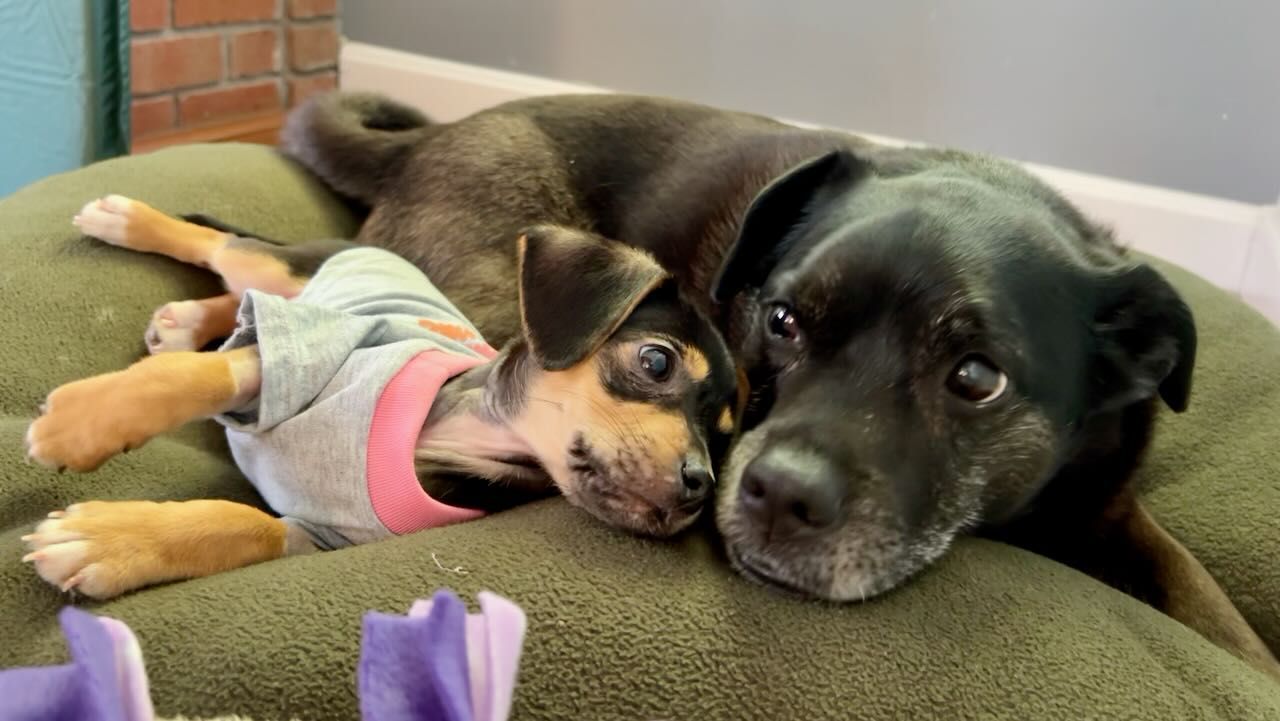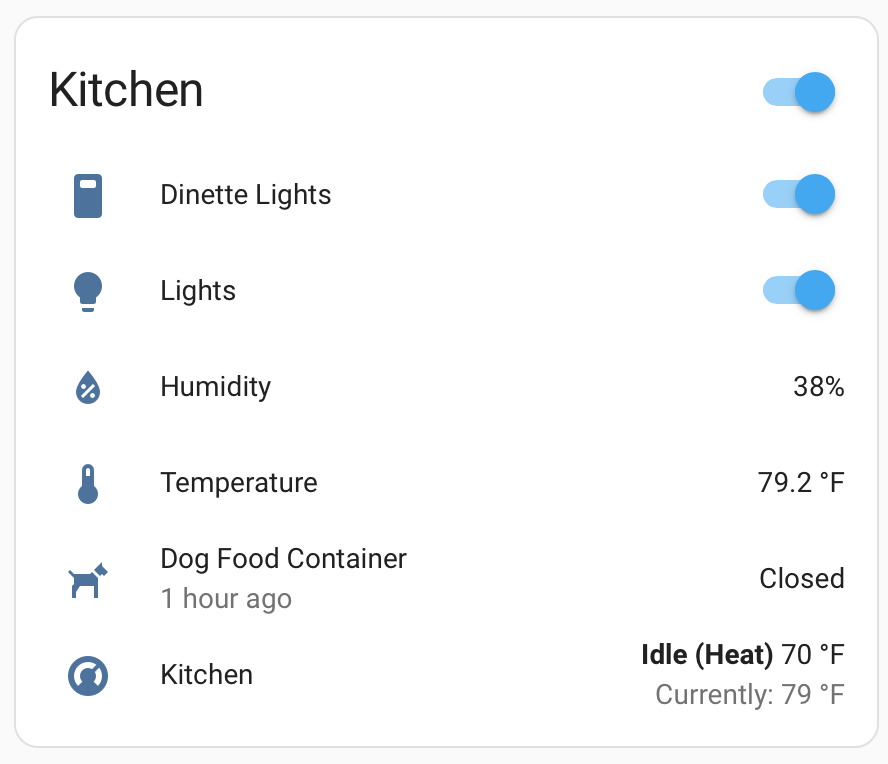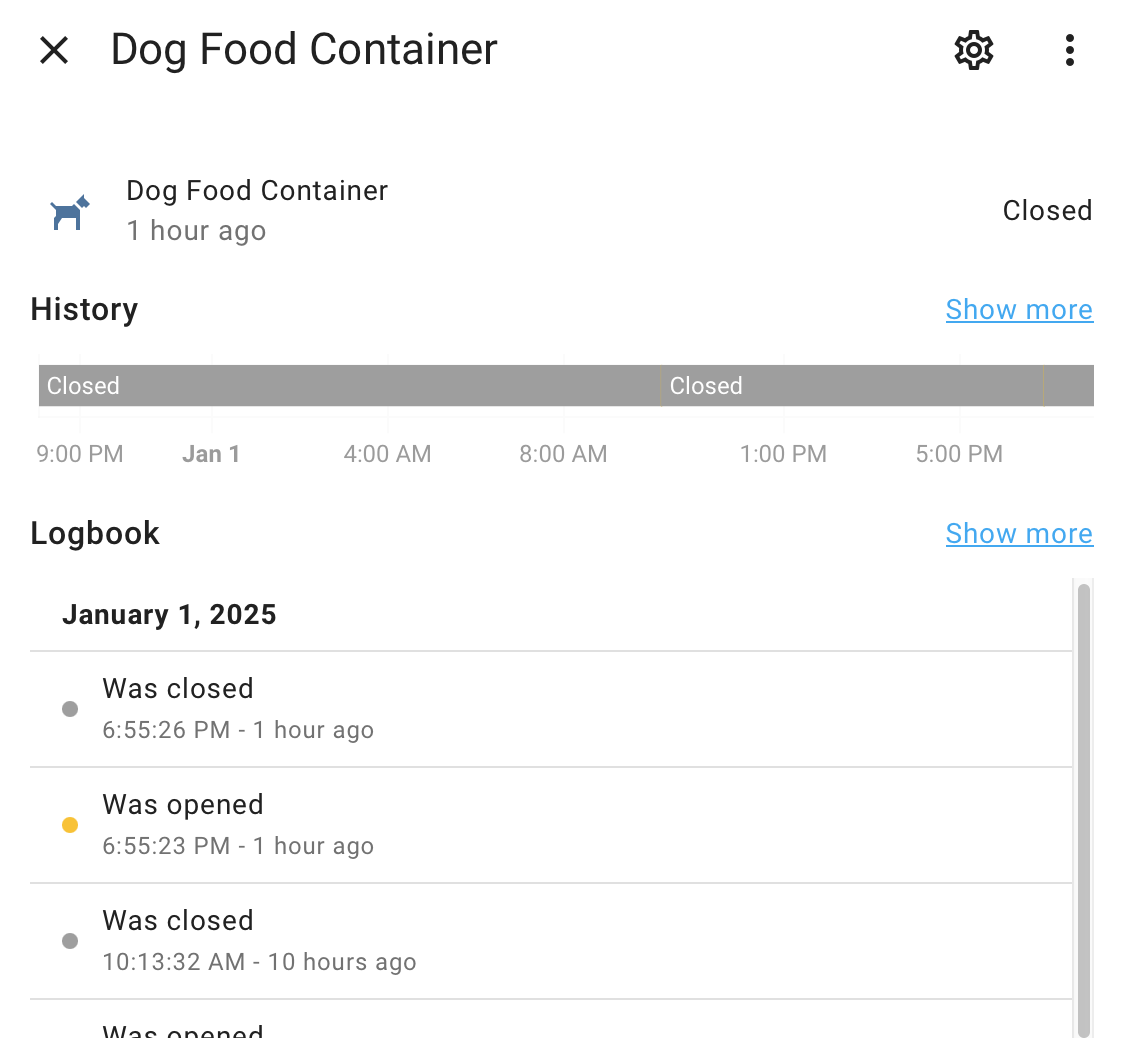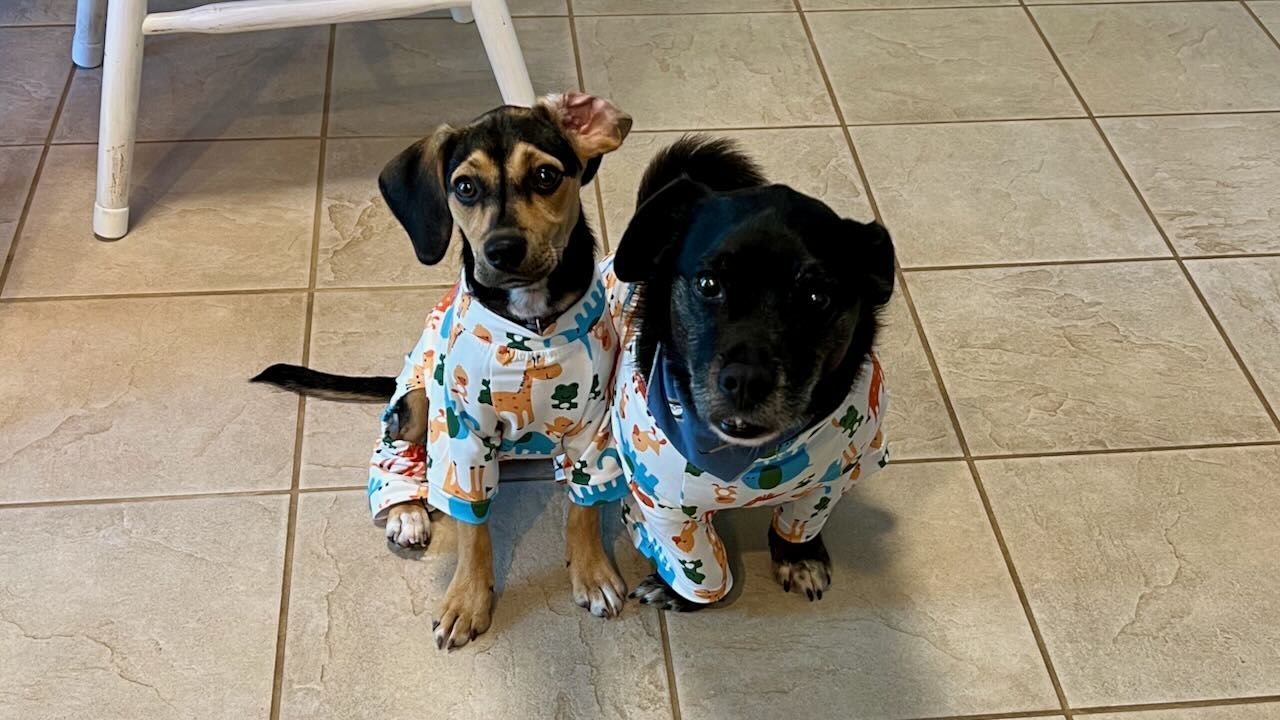Automatic dog food status light
The goal: feed the dogs 2x/day

Ideally my two pups would be fed roughly the right amount of food at roughly the right time, twice a day.
And we’d all be sure that it happened.
The problem: did someone feed the dogs?
We faced uncertainty nearly every day. With humans coming and going to various things, it was often difficult to know and this surely led to under- and over-feeding.
This is a classic systems/process problem (with perhaps a dash of volunteer’s dilemma): the way we managed dog feeding was designed to ellicit bad outcomes, and eliminating those bad outcomes (i.e. under/over feeding) requires a change to the system. “Trying harder” won’t cut it. (More on this at the end.)
Some ideas
As a family we talked about possible solutions to this problem:
- Designate one caretaker as the person responsible for making sure the dogs get fed each day
- Make a note when they’re fed
- Pre-measure their food for the week, and pour it out of the day’s marked container each day
- Change nothing (the dogs will tell us when we forget!)
We tried all of these things and they all helped a little. But they all had significant shortcomings:
- Each person is busy and has a relatively chaotic schedule
- People forget, and it’s hard to fill in the gaps without knowing if the gap exists or not
- Keeping notes and/or pre-measuring is extra work and isn’t necessarily reliable
- My pups are unreliable witnesses
A real solution
I knew about medicine bottles that show time-since-last-open and thought something like that would be wonderful. What we have finally arrived at is a solution that completely solves our problem with the following results:
- We have a status light that anyone can read at a glance: it turns red when the dogs need fed, and turns green when they’ve recently beed fed
- The status light updates automatically with no extra work (very important!)
It’s basically an andon light/stack light, powered by Home Assistant and two components: an open/close sensor on the dog food container and a smart RGB night light.
Build details
I used an Aqara door/window sensor ($15) attached to the lid of my dog food container, and an RGB smart night light ($30). Then I set up an automation in Home Assistant to do the following:
- Turn the light on, set to RED 🔴, at breakfast and dinner time
- Set the light GREEN 🟢 when a feeding occurs
- Turn the light OFF ⚪️ two hours after a feeding
Here’s the heavily annotated yaml:
alias: Set dog food status
description: ""
trigger:
# trigger in the morning and evening so we can turn
# the light ON and RED for breakfast and dinner
- alias: Morning
platform: time
at: "07:00:00"
id: morning
- alias: Evening
platform: time
at: "18:00:00"
id: evening
# trigger when the dog food container changes to
# "closed" so we set the light to GREEN
- platform: state
entity_id:
- binary_sensor.open_close_xs_sensor_window_door_is_open_3
to: "off"
alias: Fed
id: fed
action:
# I found that changing the light was more reliable if
# I always turned it off first
- service: light.turn_off
metadata: {}
data: {}
target:
entity_id: light.dog_food_status_light_light
alias: Light off
- if:
# if trigger=fed, i.e. food container was just closed,
# set the light to GREEN...
- condition: trigger
id:
- fed
then:
- alias: Turn light green
service: light.turn_on
metadata: {}
data:
rgb_color:
- 0
- 249
- 0
brightness_pct: 25
target:
entity_id: light.dog_food_status_light_light
# ...and wait 2 hours...
- delay:
hours: 2
minutes: 0
seconds: 0
milliseconds: 0
# ...then turn it off. This way humans can tell long
# after feeding time that everything is cool
- service: light.turn_off
metadata: {}
data: {}
target:
entity_id: light.dog_food_status_light_light
else:
# else, the trigger is the breakfast or dinner timer
# so just turn it red
- alias: Turn light red
service: light.turn_on
metadata: {}
data:
rgb_color:
- 255
- 38
- 0
brightness_step_pct: 100
target:
entity_id: light.dog_food_status_light_light
mode: single
I cannot express just how helpful this has been 😊. And since it’s all in Home Assistant, it shows up on my dashboard. Here you can see that they were last fed an hour ago, and keeps history, though that’s not really necessary:


Happy humans and happy pups.

An aside on systemic problems
My most important professional skill is identifying and solving systemic problems. As W. Edwards Deming explains in Out of the Crisis, issues that occur within a system need to be addressed by changing the system:
Eighty-five percent of the reasons for failure are deficiencies in the systems and process rather than the employee. The role of management is to change the process rather than badgering individuals to do better
And L. David Marquet writes in Leadership Is Language:
We need to always remember that the organization is perfectly tuned to deliver the behavior we see, and people’s behaviors are the perfect result of the organization’s design. As individuals, we should embrace our responsibility for being the best we can be within the design of the organization. But as leaders, our responsibility is to design the organization so that individuals can be the best versions of themselves.
See also: Upstream by Dan Heath.
Sometimes (much to my family’s chagrin), I apply these lessons at home too.